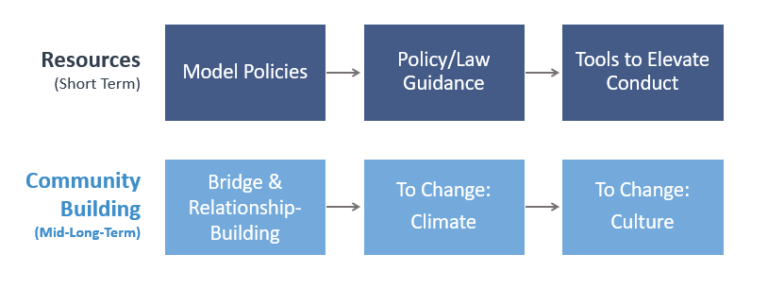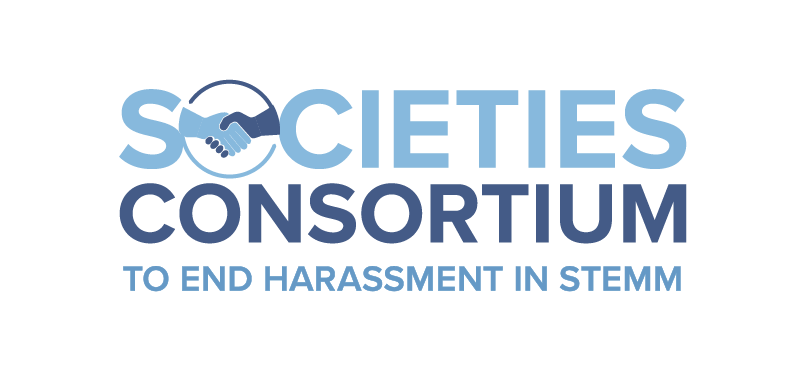About
Why the Societies Consortium was Created
The National Academies of Sciences, Engineering and Medicine in June 2018 issued its Consensus Study Report on sexual harassment in Science, Engineering and Medicine [LINK]. The report assembles research and expert guidance that reveal an issue of ethics, equity, diversity, and inclusion associated with sexual/gender and intersecting bases of harassment that has persisted in science, technology, engineering, mathematics and medicine (STEMM) fields, despite decades of laws prohibiting this harmful conduct. Real change requires support for the success of all participants in STEMM to embrace community norms of excellence that recognize the importance of both:
- high quality research, teaching, and practice and
- high standards of professional and ethical conduct, climate and culture that create a welcoming and inclusive community where all talent can thrive.

Societies have a unique role in setting standards of excellence, and influencing and assisting all STEMM fields’ participants as they seek to achieve-and to be recognized by societies for achieving-excellence. Societies serve as standard bearers, modeling good conduct, climate and culture in their own operations, as well as standard setters for excellence and related conduct in STEMM fields. Societies influence and assist their members in their roles and activities at societies and at the home institutions where their members work and study (higher education and research organizations, hospitals, and industry).
How is the Societies Consortium achieving its mission and vision
The mission of the Societies Consortium is to advance equity, excellence, and integrity in the STEMM ecosystem by eradicating the systems that create and support harassment.
Our vision focuses on sexual, gender, and intersecting racial and ethnic equity and anti-harassment. It is grounded in the belief that all talent must be welcome and able to thrive in STEMM education and research to realize STEMM’s potential to contribute to a positive future for society, the world’s economy, all life, and the planet.
The Societies Consortium operates using a two-track framework based in a logical sequence of events, while allowing for stakeholder engagement and continuous improvement. The following graphic illustrates this framework.

Supporting Principles and Definitions
- Sexual harassment is a critical issue of ethics, equity, diversity, inclusion and excellence in STEMM research, education and practice. It is a barrier to excellence that must be eliminated.
- Sexual harassment, as included in the Societies Consortium’s mission is broadly defined to include gender harassment (sexism, disrespect, and denigration on the basis of gender), quid pro quo and hostile environment sexual harassment, sexual assault, and any other discrimination on the basis of sex or gender.
- It is recognized that sexual harassment intersects with racial, ethnic and other bases for harassment and discrimination, exacerbating the adverse effect on those individuals targeted on multiple bases.[1]
- The Societies Consortium will serve needs of societies’ operations, as well as STEMM fields (including societies, educational and research institutions and organizations, teaching hospitals, faculty, staff and students, as employers, researchers, educators, employees and learners).
- Through a collective endeavor, the Societies Consortium will achieve its mission in a manner that is effective, as well as time- and cost- efficient. The Societies Consortium also aims to model the professional and ethical conduct, climate and culture it seeks to advance.
[1] Academies Report pp. 46, 50, 77.
